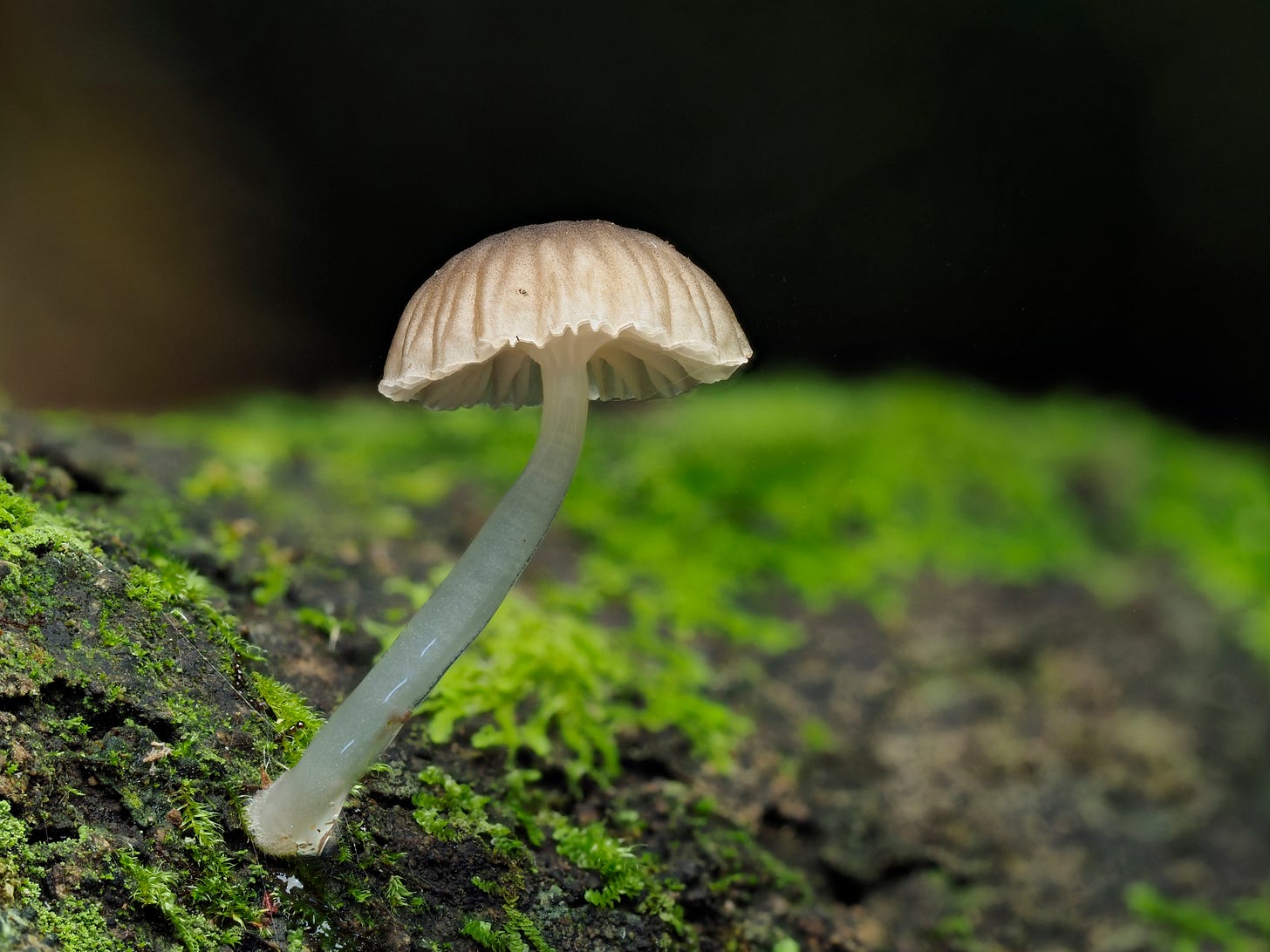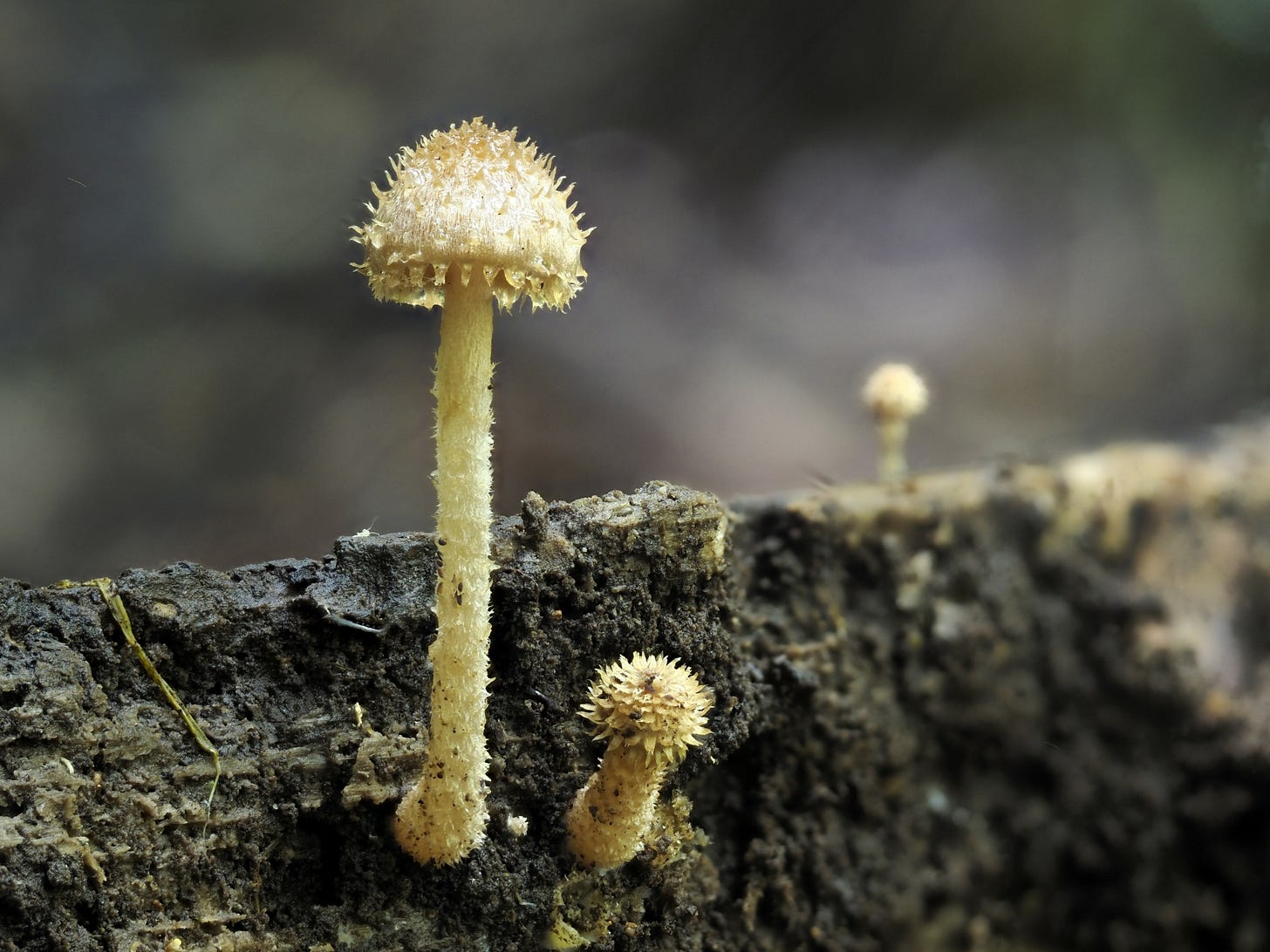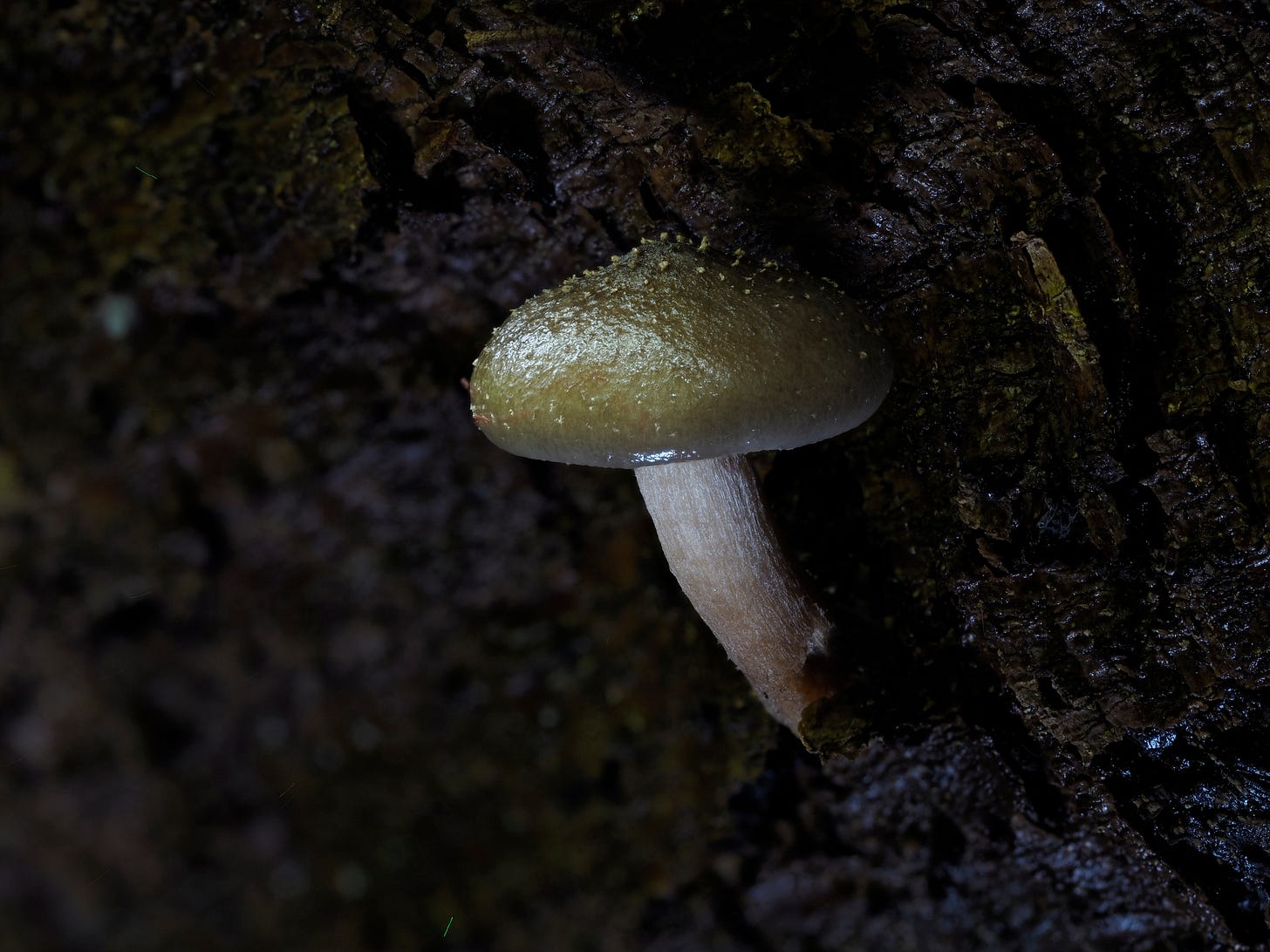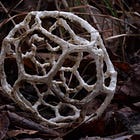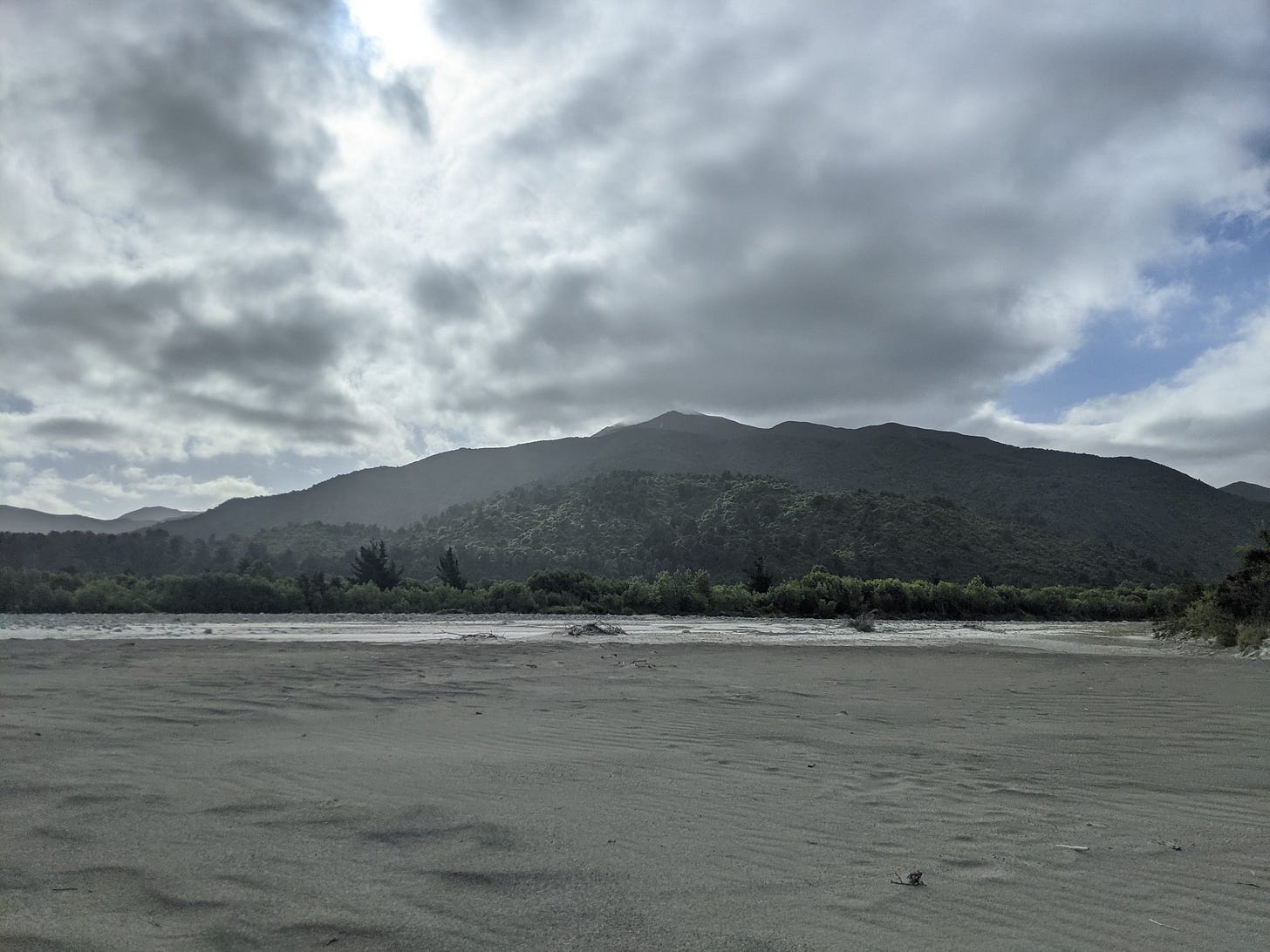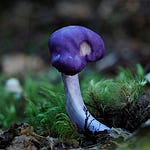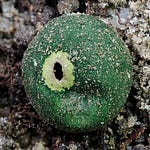A couple of hours south of Christchurch, just past the charming old town of Geraldine, the road leads me towards Peel Forest, where the native bush still clings to the foothills of Canterbury.
Fragments of ancient podocarp forests survive here against the Rangitata River. Much of it was felled by early Māori for cultivation, by settlers for timber, and by fire, but what remains can be felt in the understory and in the filtered light that comes through giant tōtara and ferns.


It’s March (late summer), and I’ve returned for the first time in over three years. I spent a good chunk of that last visit during November and December. This time, I’ve set up my tent at the DOC campground. The place has changed (there’s WiFi now), and with it, the sense that the secret’s out. Nearly every site is full.
Still, there are pockets of stillness just a short walk into the bush.

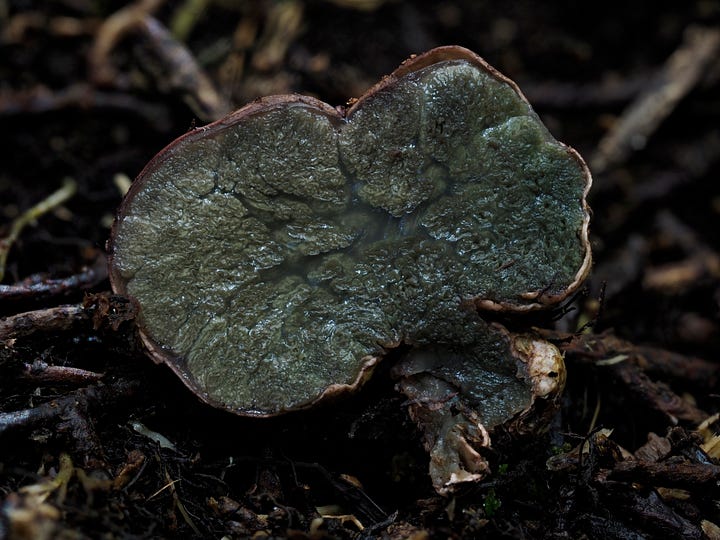
The forest floor is in constant dialogue with decay.
Climbing the steep hill on the Fern Trail, I spot a rotting log, and embedded are clusters of Hysterangium sp.—a false truffle lookalike that blushes red on its peridium when bruised.
I’ve tried more than once to see if Roridomyces austrororidus glows in the dark like its luminescent cousins, but I've had no luck so far.
Closer to camp, I would spend some days wandering. Cutting through knee-high grass, sidestepping the yellow gorse that clings stubbornly to the riverbank. The Rangitata roars, tumbling over wide beds of stone. To get close, you have to hop from rock to rock across a hundred meters of dried riverbed to reach the water’s edge.
I duck under low branches and hold awkward poses to study the forest floor. Somewhere behind the brush, a fantail flits. Bright yellow waxcaps standout in the middle of the trail.
Down by the stream, the filtered light makes photographing Bolbitius muscicola challenging. Its viscid cap flashes against the dappled canopy, too reflective to capture clearly until I find a patch of shade.



Kurapika—Golden Tree Ferns. Their skirts of golden-brown fronds drape in thick layers, and the forest floor beneath them is cool with leaf litter. Above, a canopy of deep green filters the summer sun. The shade is a gift. In places, it’s almost cold.
The climb to Acland Falls is nearly all uphill. At the top, I scramble over rocks to get closer, where the mist hangs in the air and the temperature drops.
The trail branches off and eventually leads out onto Te Wanahu Flat. Picnic benches sit beneath cabbage trees. The grass is freshly mowed. I cross the open field and spot a sign: Big Tree.




I begin seeing red scattered throughout the undergrowth: Leratiomyces ceres, Leratiomyces erythrocephalus, and the bright Paurocotylis pila—the scarlet berry truffle—by far the most prolific fungus in the forest. It has a special relationship with tōtara.



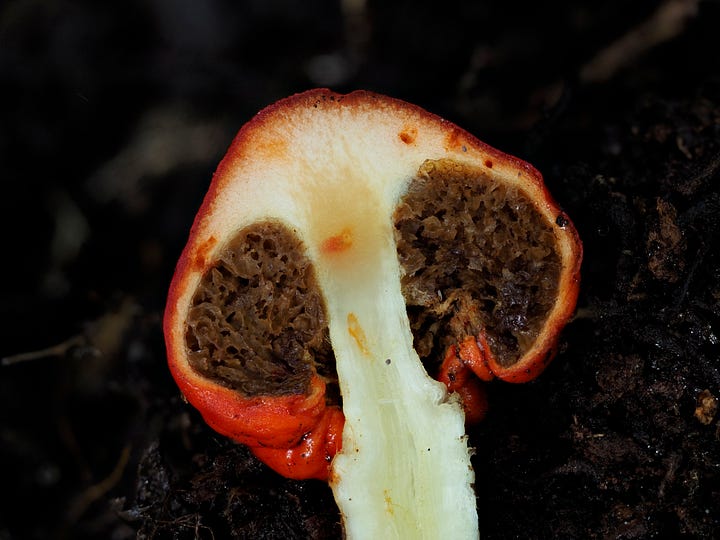


I follow the path, and around the bend, there it is—the ancient tōtara, easily a thousand years old. The Big Tree. A true taonga, or treasure. Known for its strength and longevity, it's long been associated with leadership and resilience. Traditionally, its timber was prized for carving and used to shape tools, containers, and intricate works of art that carried stories through generations.
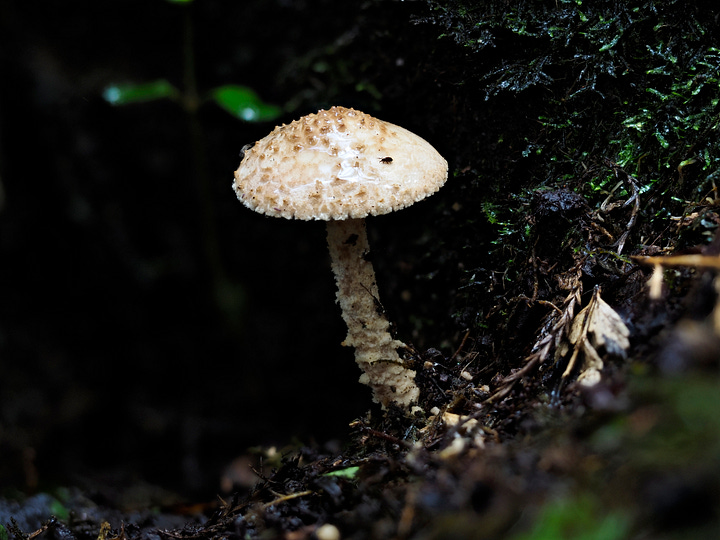
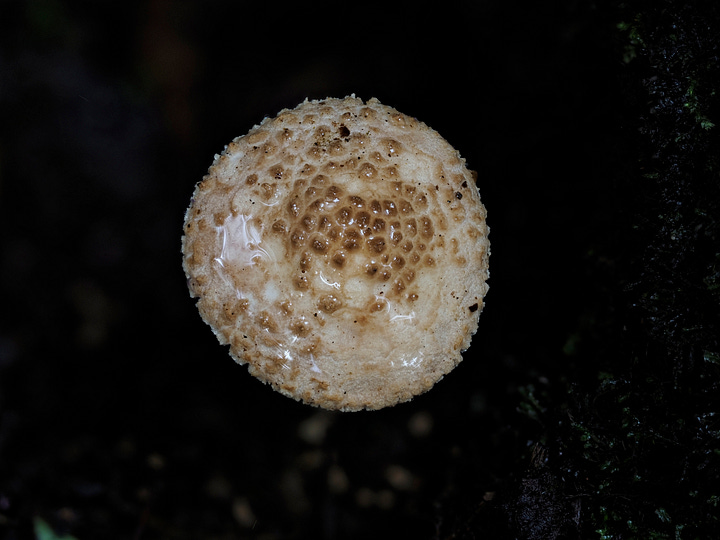
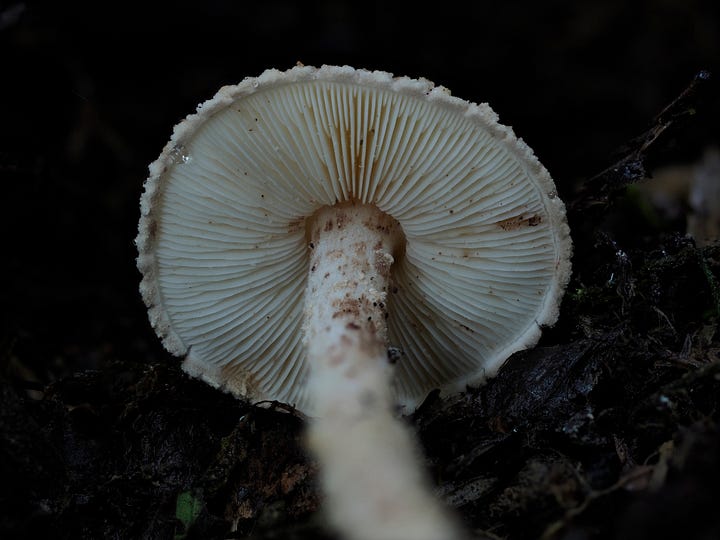

The forest seems to open in deference. Massive roots twist like sculptures from the ground, forming quiet spaces to sit and listen. The tree feels like a gathering place for stories as if it might begin speaking at any moment.


I spot Lentinellus with serrated gills, which instantly takes me back to the mossy trails of Nara, Japan.
Armillaria novae-zelandiae / Austral Honey Mushroom climbs dead trunks and appears olive-colored and fades to tan the older they get; faintly bioluminescent by night.
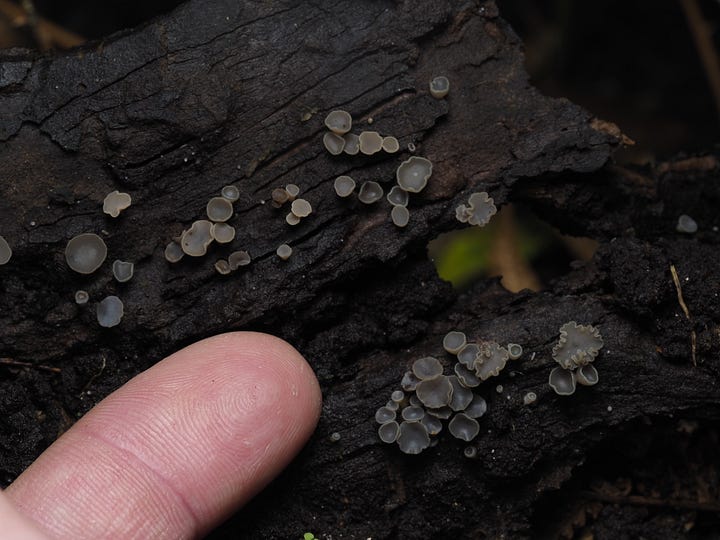
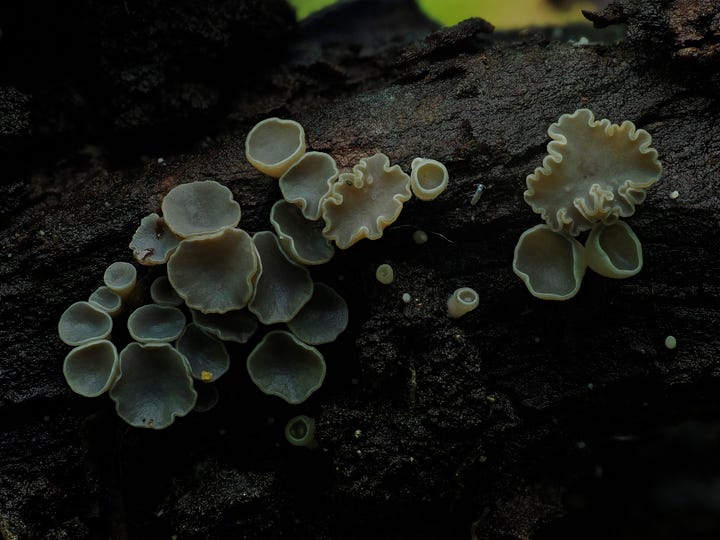

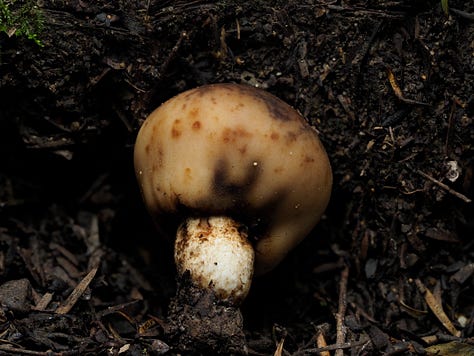

Some more tiny specimens on the way to Acland Falls.


A Pseudohydnum sp., smaller than a fingernail—possibly the tiniest I’ve ever found.
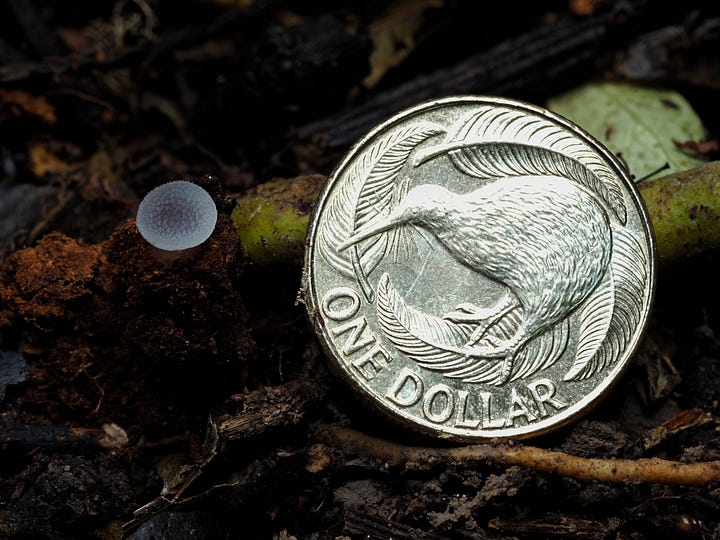

Then there are the grotesque showstoppers (the stinkhorns and stinkcages), strange enough to make you pause mid-step.
A lone Aseroe rubra / Anemone Stinkhorn rises like a red sea creature. I discovered it while retracing my steps, looking for my lost lens cap.



At the Domain in Geraldine, I find Clathrus archeri, Devil’s Fingers, clawing out of the mulch like some creature half-born.
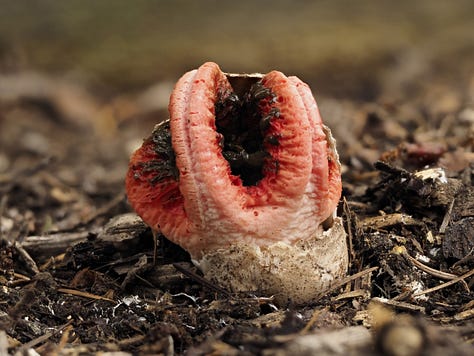


Right next to it, Ileodictyon cibarium, the White Basket Fungus—its ghostly, hollow lattice exuding a rancid smell to lure in flies. Māori once called it tūtae kehua (ghost droppings).
Evenings are spent in the communal kitchen back at camp, where I’m writing this now. It’s where a maze of power cords hangs from the one good outlet. I’ve been rotating between tent and car and making the most of these last days of summer before winter arrives. I plan on returning to Peel Forest in mid-April, and I’m curious what else I’ll find.




